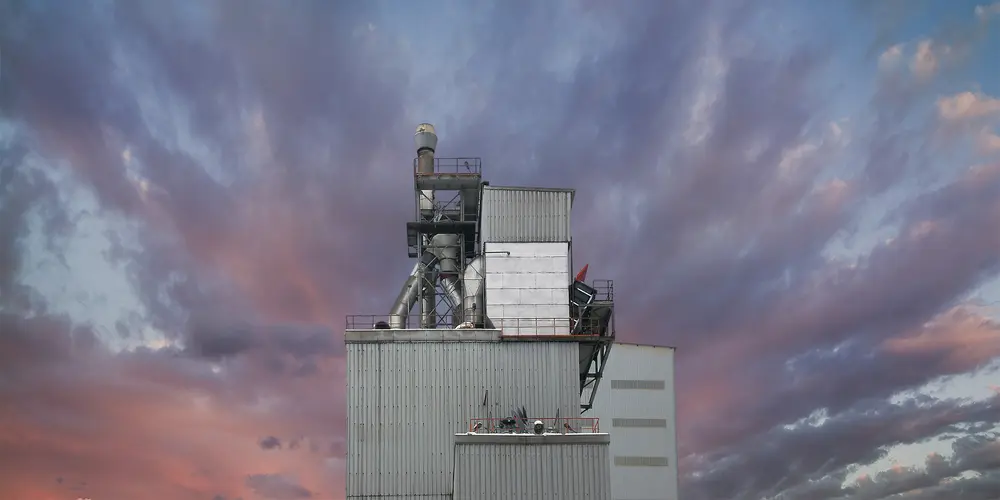Coal stockpiles are essential components of the energy supply chain, providing a reserve of fuel for power plants and industrial operations like cement and lime products manufacturing. Managing these stockpiles presents significant safety challenges. Ensuring the safety of coal stockpiles involves addressing risks related to spontaneous combustion, structural stability, and environmental impacts. This article delves into the key aspects of coal stockpile safety and offers best practices for mitigating associated risks.
1. Understanding the Risks
Spontaneous Combustion: One of the most critical hazards in coal stockpiles is spontaneous combustion. Coal, particularly when stored in large quantities, can oxidize, generating heat. If the heat is not dissipated, it can reach ignition temperature, leading to fires. These fires are challenging to detect and extinguish, posing significant risks to both personnel and equipment.
Structural Stability: The stability of coal piles is another concern. Improperly managed stockpiles can collapse, causing injuries or fatalities. Factors such as moisture content, pile height, and the angle of repose must be carefully controlled to prevent slumping and collapse.
Environmental Impacts: Coal stockpiles can also impact the environment. Runoff from coal piles can contaminate water sources, and dust from coal can affect air quality, posing health risks to workers and nearby communities.
2. Best Practices for Coal Stockpile Safety
Design and Maintenance: Effective stockpile design and maintenance are crucial for preventing structural instability and spontaneous combustion. Key considerations include:
- Pile Shape and Size: Maintaining an appropriate pile shape and size to promote stability and allow for proper ventilation. Conical piles are often preferred for their stability. The formation of the stockpiles has to inhibit ‘pockets’ in which, on floor level, CO (carbon monoxide) can accumulate.
- Pile accessibility: It is essential that piles are accessible for the removal of portions undergoing intensified oxidation at all times.
- Moisture Control: Regular monitoring of moisture levels to prevent both excessive dryness, which can lead to dust problems, and excessive wetness, which can cause pile instability.
- Separation: Keeping different types of coal separate to avoid adverse chemical reactions.
Monitoring and Surveillance: Continuous monitoring and surveillance are vital for early detection of potential hazards.
- Temperature Monitoring: Using thermal imaging cameras and temperature sensors to detect hot spots within the pile.
- Gas Detection: Installing gas detection systems to monitor for the presence of gases such as CO, which can indicate combustion.
- Regular Inspections: Conducting regular visual inspections to identify signs of instability or unusual heat generation. Intensified oxidation in most cases will release a smell.
Fire Prevention and Control: Preventing and controlling fires in coal stockpiles involves both proactive and reactive measures.
- Preventative Measures: Implementing measures such as controlling the coal’s oxidation rate, applying chemical inhibitors, and ensuring adequate ventilation in case of covered stockpiling.
- Firefighting Readiness: Having firefighting equipment readily available and training personnel in fire response procedures. Only complete water inundation of portions undergoing intensified oxidation will stop this. Since coal is hydrophobic, water spraying will cause the water to accumulate on the floor under the stockpile or run off, with little effect.
Environmental Protection: Minimizing the environmental impact of coal stockpiles requires diligent management.
- Dust Control: Employing dust suppression techniques such as water sprays, surfactants, and windbreaks to minimize airborne coal particles.
- Runoff Management: Implementing systems to capture and treat runoff water, preventing contamination of local water sources.
Training and Safety Culture: Creating a culture of safety through comprehensive training and awareness programs is essential.
- Safety Training: Regularly training employees on best practices for coal handling, emergency response, and environmental management.
- Recording of incidents and Applied Remedies: Record applied remedies for learning purposes.
- Safety Protocols: Establishing and enforcing strict safety protocols for working around coal stockpiles.
3. Regulatory Compliance
Compliance with local, national, and international regulations is imperative for the safe management of coal stockpiles. Regulations often cover aspects such as:
- Environmental Standards: Guidelines for controlling emissions, runoff, and other environmental impacts.
- Occupational Safety: Standards for ensuring the safety and health of workers handling coal.
- Fire Safety Codes: Requirements for fire prevention, detection, and suppression systems.
Conclusion
Coal stockpile safety is a multifaceted issue requiring a holistic approach to manage the inherent risks. By adhering to best practices in design, monitoring, fire prevention, environmental protection, and training, industries can significantly reduce the hazards associated with coal storage. Ensuring regulatory compliance further strengthens safety measures, safeguarding both people and the environment. Through diligent management, coal stockpiles can remain a reliable and safe energy resource.
